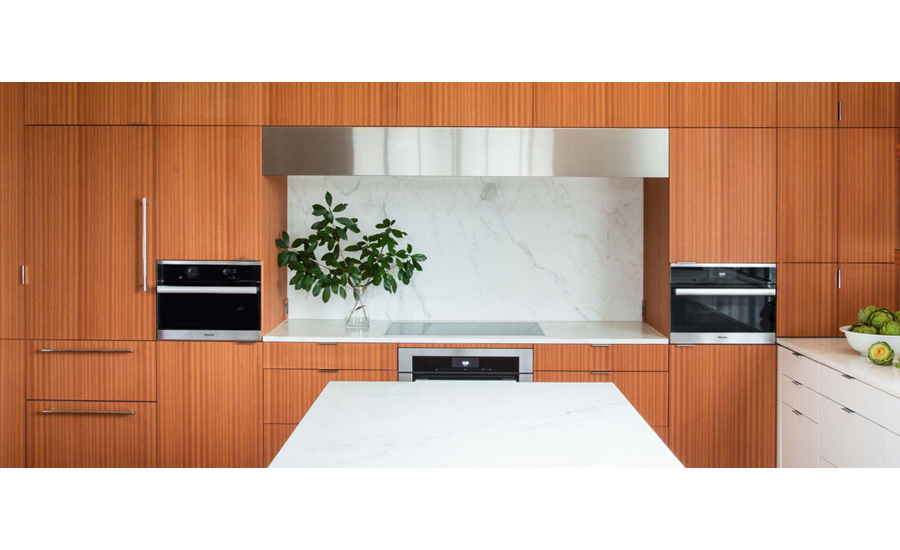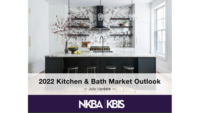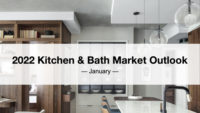The National Kitchen & Bath Association (NKBA) released its 2021 Market Outlook report, revealing the industry is poised for continued growth with overall spending for both kitchen and bath projects to increase in the coming year. The industry anticipates a pronounced rebound in overall industry growth from -5.9% in 2020 to 16.6% in 2021, compared to 9% in 2018 and 1% in 2019.
“After such a strong year for home remodeling in 2020, some wondered if we were approaching a home improvement spending ‘cliff.’ We’re pleased to say that’s not what the kitchen and bath market is expecting in 2021,” said Bill Darcy, NKBA CEO. “Last year, homeowners started the work of improving their living spaces with DIY projects. And this year, with early distribution of the vaccine and other measures to reduce the public health impact of the virus, we expect to see continued renovations and more projects requiring our members.”
The study saw a number of project motivators and inspirations that continue to drive renovations:
- While larger, more professional-intensive projects are slated to increase this year, homeowners cited a desire to save money (25%), additional time to pursue projects (23%) and health and safety concerns (22%) as the primary reasons for recent DIY work.
- Households indicate that improving the home’s aesthetics are the main motivators for remodels in the bathroom (16%) and kitchen (15%), followed by maximizing quality and durability, and increasing the value of the home.
- Homeowners completing budget-friendly bathroom remodels focused on updating cabinets (52% of projects) and plumbing (43% of projects). Smart home products (57%) and water filtration systems (54%) were the focus of premium feature upgrades in the kitchen.
- Both household income and life stage jointly influence kitchen remodel cost considerations. “Mature households,” those age 45+ with no children, have the highest share of premium upgrades in their kitchens.
- Google searches and social media are the primary inspiration for kitchen and bath remodels. Households frequently indicate that they rely on more than one source to inspire a remodel. Young single homeowners or couples tend to more heavily rely on Google and Instagram, while mature adults (45+) put greater weight on other homes seen in person for inspiration.
Economic indicators that may impact remodeling activity include:
- A 10% growth in single family residential construction starts in 2020 will lead to new construction dollarizing in 2021, driving a +17% growth in new residential building materials.
- Spending on new construction represents 57% of the total residential kitchen and bath spending at $90.0 billion. Residential remodeling makes up 43% at $68.6 billion in spending.
- Approximately 1% lower mortgage rates than a year ago will continue to drive demand for homes across buyer segments.
- With a record low for-sale inventory, housing stock is set for price appreciation, which will serve to increase homeowners’ decisions to pursue large-scale remodels. The study forecasts an approximate 31% total house price appreciation between 2020-2023 driven by both the supply shortages and underlying demand.
NKBA commissioned the highly regarded consulting firm John Burns Real Estate Consulting (JBREC) to field the study. The data presented in this report is compiled from a variety of sources: The U.S. Census American Housing Survey home-improvement projects microdata, National Apartment Association (NAA) spending (rental), and JBREC’s home improvement estimates and forecasts of single-family rental renovation spending. In addition, a survey was conducted among 4,732 among homeowners who had initiated a home improvement project since the start of the COVID-19 pandemic.




